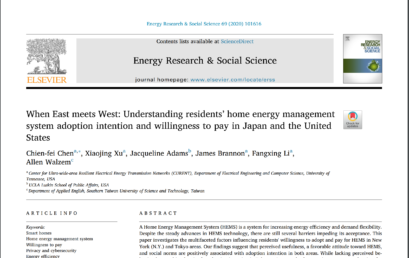Energy modeling and data structure framework for Sustainable Human-Building Ecosystems (SHBE) — a review, Frontiers in Energy
1.1 Sustainable human building ecosystem (SHBE) and its constituent elements
The Paris Climate Accord signed by 197 parties of the convention and ratified by 160 members out of 197 in December 2015 [1], is indeed a positive step toward low carbon development. To achieve low carbon development, it is of paramount importance to understand the development of human-building ecosystems, the policy framework that influence such ecosystems and ultimately the consumer behavior on which the development is dependent upon. Here, we propose an innovative and exhaustive Data Structure framework for SHBE.
Modeling and data infrastructure for human-centric design and operation of sustainable, healthy buildings through a case study
This paper focuses on data infrastructure that is central to the modeling of design and operation of sustainable and healthy buildings. While reducing energy consumption by making buildings more energy efficient has been touted as an easily obtainable approach to promoting carbon-neutral energy societies, the sustainable buildings’ benefits and impacts on human wellbeing have not been clearly quantified to the extent that they may directly influence the decision of adopting sustainable building designs. The authors argue that focusing on the wellbeing of people occupying the buildings will lead to significant changes in the decision-making process of the design and operation of sustainable buildings. The authors propose a framework to define the type of data that can be measured or acquired and contributed to the design and operation of buildings for energy efficiency in relation to human wellbeing and social economic aspects. The framework can benefit building designers and operators for decision-making using wellbeing-centric life cycle assessment. The methodology presented in the paper is supported through a case study.

